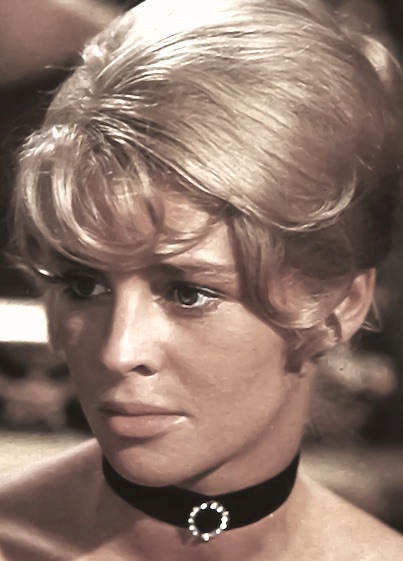On this date in 1940, actress Julie Frances Christie was born to Rosemary and Frank Christie on a tea plantation her father managed in Chabua in northeast British India. A rift developed in the marriage over Frank’s ongoing amicable relationship with his Indian daughter born out of wedlock in 1934 and kept secret from Rosemary, whom he had wed three years later.
Christie, baptized Anglican, was sent to live in England to further her education when she was 6 and attended two parochial schools — one Anglican and one Catholic — both of which she was expelled from, in one instance for telling a risqué joke she was forced to apologize for in front of a school assembly. Her mother joined her in the UK, moving to rural Wales when Christie was in her early teens.
After further schooling in Paris and London, she made her professional stage debut at age 17, with her first screen roles on British television. Her breakthrough film role was in director John Schlesinger’s “Billy Liar” (1963) in which she was nominated for a BAFTA award for Best British Actress. She won the Best Actress Oscar in 1965 for her role in “Darling,” another Schlesinger film.
Christie, petite at 5-foot-2, reportedly was considered to play Honey Ryder, the first Bond girl, but lost out to Ursula Andress, whose bosom was seen as a bigger box office draw for “Dr. No” in 1965. Then “Doctor Zhivago” came calling in the person of Omar Sharif that same year. Her role as Lara Antipova helped the movie eventually rank as the 9th-highest-grossing film of all time in 2022. (Coincidentally, she and “Zhivago” co-star Rod Steiger share a birthdate.)
After Life magazine called 1965 “The Year of Julie Christie,” she played dual roles in Truffaut’s “Fahrenheit 451” (1966), worked again with Schlesinger in an adaptation of Hardy’s “Far From the Madding Crowd” as Bathsheba Everdene (1967) and co-starred with George C. Scott in “Petulia” (1968). That was the last film in which she was the “top-liner,” according to the Internet Movie Database.
She turned down several roles that would earn the actresses who got them various awards. “I began to turn down roles if I felt the women fell into accepted patterns of womanhood,” she told interviewer Oliver Webb in 2020. But many fine roles and critically acclaimed performances followed, including “The Go-Between” (1971), “McCabe & Mrs. Miller” (1971), “Don’t Look Now” (1973, controversial for a sex scene with Donald Sutherland), “Shampoo” (1975), “Heaven Can Wait” (1978), “Afterglow” (1997) and “Away From Her” (2006), for which she was nominated for the Best Actress Oscar for playing a nursing home resident with Alzheimer’s.
Christie’s seven-year sporadic relationship with Warren Beatty ended in the mid-1970s and she moved to Wales. She and Beatty had bonded over the cause of animal rights and she became a vegetarian. She also embraced liberal causes and had been photographed while handcuffed to Black actor Cy Grant on Human Rights Day in 1961. She has consistently spoken out against the impossible physical standards women are held to as they age in the acting profession. She is fluent in French and Italian.
Her long relationship with and eventual marital union in January 2008 to liberal Scottish journalist Duncan Campbell are “not clear because she has been against the institution of marriage all her life,” it was reported by The Telegraph India. “Nonsense,” she told reporters the next month. “I have been married for a few years.” (People magazine, Feb. 11, 2008)
PHOTO: Publicity still of Christie as Lara in “Doctor Zhivago” in 1965; public domain.

